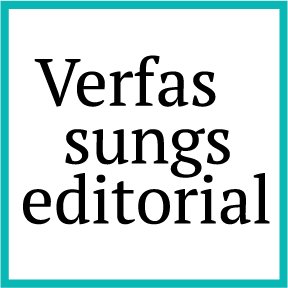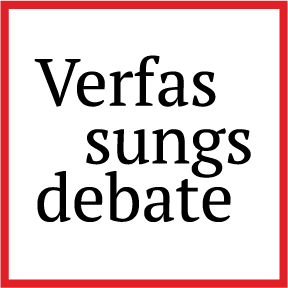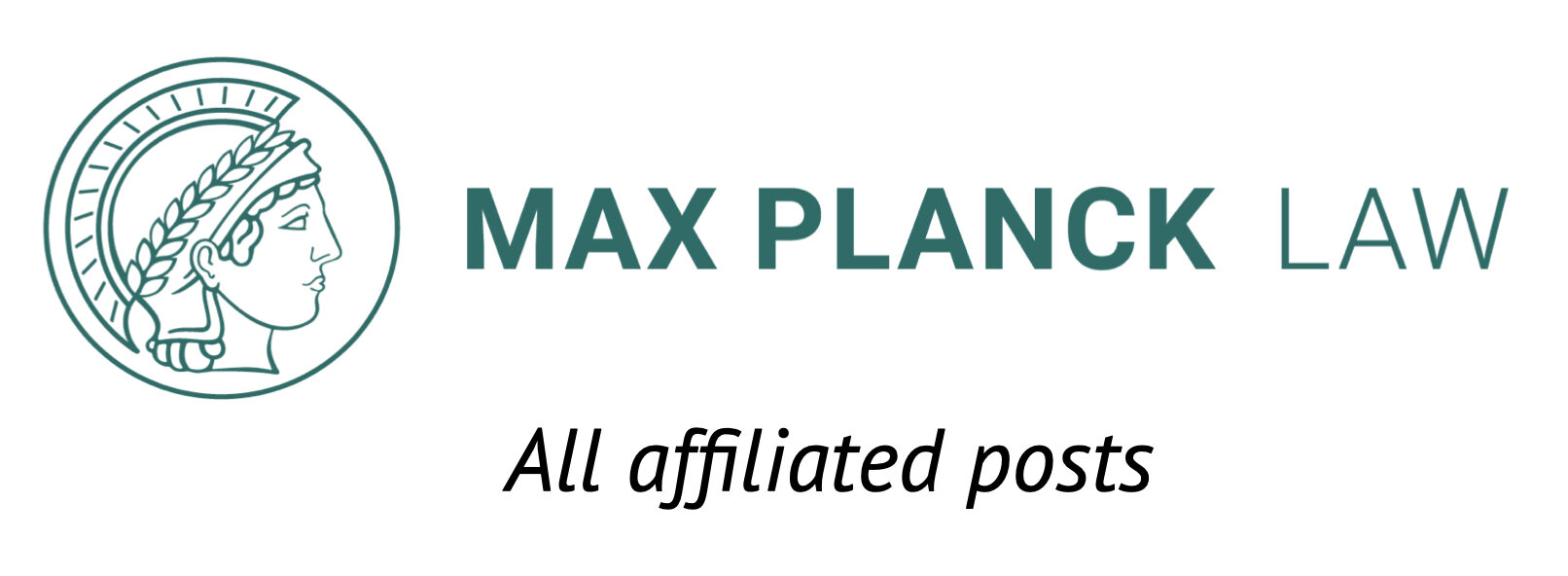What Are Human Rights For?
On the May 2025 Danish-Italian Public Letter to the ECtHR
To say that human rights are in crisis has become commonplace in scholarship and practice. Yet, the prominent discourse on contestation or even backlash to human rights has not led to a significant erosion of regional human rights courts. They continue adjudicating on core political, economic, social, and cultural conflicts – even if the odds of the actual implementation of decisions have become worse, or in some cases, non-existent. Over the last two decades regional human rights courts have remained, more or less, resilient.
The Danish-Italian public letter to the European Court of Human Rights (ECtHR) from 22 May 2025 must be understood in the context of two decades of “crises” in the European human rights regime. Its tone, form, and objectives reverberate the air of Interlaken, Brighton, and Copenhagen. Even the substance – the deportation of “foreign criminals” and the desire to “take back control” over border management – mirrors political ambitions that had dominated the Interlaken Process on the reform of the ECtHR from 2010 to 2020. While the letter represents a significant challenge to the ECtHR, none of this is in any way new or unprecedented.
Yet, what makes the public letter of nine ECHR member states truly troubling is its changed geopolitical context. Across the globe, we see high-profile plans to restrict rights, instrumentalize migrants, or even transnationally detain them. The ECtHR, as the oldest and most prominent regional human rights court, has a special responsibility to uphold human rights standards, to protect “the soul of Europe”, and to interpret the European Charter of Human Rights (ECHR) in the spirit of what the Court itself described at the 75th anniversary of the ECHR on 14 May 2025 as “a living instrument in a changing world”.
I will first summarize the main contents of the letter before comparing it with previous instances of state criticism against the ECtHR. Ultimately, I show that it is exactly the rights of those most vulnerable due to intersectional qualities such as migration status that become the litmus test for human rights protection in “an age of monsters”.
Signatory States and Their Demands
The letter, whose draft was leaked a few weeks prior, was published on the homepage of the Italian government on 22 May 2025. While it explicitly attributes “the initiative” of the letter to Denmark and Italy, it is signed by nine states in total, including Austria, Belgium, the Czech Republic, Estonia, Latvia, Lithuania, and Poland. Interestingly, the nine signatories are all EU member states whose Charter of Fundamental Rights provides an additional layer of human rights protection. As pointed out by Antoine Buyse, this eclectic mix of states is rather telling on who is missing, not who has joined. The group of signatories does not include states that have threatened withdrawal from the ECHR or related human rights conventions (e.g. UK and Turkey), generally struggle with difficult human rights records (e.g. Azerbaijan), or other states that have openly announced to adopt restrictive migration and asylum rules (e.g. Sweden, the Netherlands, or Germany). Finland, which is equally affected by the Russian weaponization of migration at its border, is not included, the same as Hungary and Slovakia, whose anti-migration stance conflicts with the implicit criticism of Russia in the letter. In the Dutch coalition, the advocates of the ECtHR prevailed over those preferring a stricter migration policy.
Over two pages, the letter details how migration, in particular “irregular migration” has supposedly led to the emergence of parallel societies that do not align with European values as well as the rise of societal unrest and institutional distrust due to crimes committed by migrants. The signatories argue that in this context the ECtHR has “extended the scope of the Convention too far (…), thus shifting the balance between the interests which should be protected” and thereby “limited our ability to make political decisions in our own democracies”. The signatories believe that the ECtHR should provide a larger margin of appreciation to national authorities, allowing them to expel criminal foreign nationals and to surveil those who cannot be deported. A third demand takes a different approach, namely to “take effective steps to counter hostile states that are trying to use our values and rights against us”.
From those demands, one can deduce concrete changes that signatory states hope for at the ECtHR. Importantly, they aim to circumvent non-refoulement and impose significant measures of surveillance and detention on people who cannot be deported. However, the third demand remains obscure. Aimed at the refugee crisis on the Belarussian border, it is unclear how the ECtHR jurisprudence on the issue stands in the way of taking effective (political or diplomatic) steps to counter the instrumentalization of migrants here. It seems highly unlikely that lowering the human rights obligations on ECHR member states Latvia, Lithuania, and Poland and allowing pushbacks would result in a change of course in the mentioned “hostile states”. The geopolitical conflict that is carried out on the bodies of desperate and deceived migrants would just result in more human suffering.
Twisted Historical Analogies and Pathos
The letter does not mention a single provision or case law. Instead, it invokes historical analogies, in particular, that its current state would go against “the original intentions behind the Convention” or that the ECHR was “conceived in the ashes of the great wars.” Those appeals to originalist interpretation techniques stand in contrast to references that argue that the existing case law might not help find “the answer of tomorrow” or the assumption that “we now live in a globalized world where people migrate across borders on a completely different scale.” This analogy is also historically questionable, as at the end of the Second World War, just before the ECHR’s negotiation, over 11 million displaced persons were present in Europe. Today, Europe hosts 13.2 million displaced people, of whom almost half are from Ukraine.
The letter is saturated with pathos. It relies heavily on buzzwords – from rule-based international order to a firm belief in European values or democratic societies – the signatories self-identify as “leaders of societies that safeguard human rights.” It also embraces populist narratives, claiming that Europe has lost control over migration or that the letter, embraced by a minority of 9 out of 46 governments of the Council of Europe (CoE), is “strongly aligned with the majority of the citizens of Europe”. In the end, it remains unclear if the states prioritize historical responsibility or political maneuverability. They seem to want to have their cake and eat it too, contradicting themselves in the process.
Keep Calm and Carry On
What does this mean for the future of the European human rights system? On 24 May 2025, Alain Berset, Secretary General of the Council of Europe, published a forceful response to the letter. He suggests that “appropriate institutional avenues” should be used to engage in reflection over migration as a “complex challenge” and calls out what he considers a politicization of the Court. Most drastically, he sees the independence of the Court threatened by the letter as “[t]he Court must not be weaponized — neither against governments, nor by them.”
From the publication of the letter on an governmental homepage to its populist tone and lack of legal clarity, it is apparent that the letter is not sufficient to account for an actual attempt at institutional reform (so far). It is a political statement, publicly showcasing an informal coalition of like-minded states, reaffirming national sovereignty over border and migration control, and signposting to domestic audiences that they are not afraid to challenge international adjudication (again, this is a long-standing conflict; see also Kunz). As the letter itself does not chart concrete reform strategies other than wishing to engage in “a new and open-minded conversation about the interpretation of the European Convention on Human Rights”, it might be more prudent to follow the popular mantra “keep calm and carry on.” This is what the Inter-American Court of Human Rights has done following a similar letter by five presidents in 2019.
There are good reasons to adopt this approach. Neither the form nor the substance of this backlash attempt is unfamiliar. The Interlaken Reform, one of the most fundamental reform projects in the history of the European human rights system, shifted the ECHR towards greater subsidiarity to domestic authorities. While the Interlaken Reform originally aimed to ease the ECtHR’s overwhelming caseload (a victim of its own success), it quickly became a battleground between the Court and critical member states over judicial deference and the margin of appreciation. Interestingly, also in the 2010s, this conflict was triggered over ECtHR jurisprudence that protected the rights of prisoners and, in particular, the invocation of the ECHR in favor of “foreign criminals”. For instance, the UK’s heavy involvement that led to the 2012 Brighton Declaration was influenced by the Hirst case and Denmark’s engagement in the 2018 Copenhagen Declaration followed the failed expulsion of “foreign criminal” Gimi Levakovic. While opinions differ on the success of the Interlaken Reform, (see, for instance, Helfer and Voeten, Stone Sweet, Sandholz, and Andenas, Glas, Jackson, Molbaek-Steensig), substantive demands to water down human rights protection for certain groups had, in the end, all been eliminated in the complex reform process (see, for example in the context of the Copenhagen Declaration). Yet, an ongoing reflection process has been on the agenda of the CoE since then, driven by the need to please critical member states and further aggravated by the seismic changes following the Russian expulsion.
What Are Human Rights For, If Not to Protect the Rights of Foreign Criminals?
The 2025 letter signatory states are not calling for another round of institutional reform. There is no push for an Interlaken 2.0. They do not choose the high-level conference route or call for an additional protocol or convention. Instead, they aim to scare and pressure the ECtHR which has (even if only modestly) upheld the rights of migrants and asylum seekers in the context of rising authoritarianism and the transnational carceral state.
Why then should we care about this letter? For me, the most chilling aspect lies in the substance, particularly the idea that migrants convicted of “serious violent” or “drug-related” crimes should forfeit fundamental protections, especially their right to non-refoulement. From a universal human rights perspective, this is deeply troubling. It violates core international standards of human treatment that are deeply engrained in international human rights law, for instance in the Convention against Torture or the Refugee Convention. At its core, the idea of human rights is to protect minorities. Political, religious, ethnic, sexual, or social minorities might vary, yet they share a common vulnerability vis-à-vis state actions and the respective majority. The claim, as implied by the Danish head of state, that it is the majority that needs protection from overreaching human rights instruments is a clear paradox. If the signatories are truly committed to “safeguard human rights”, then the fundamental rights of migrants must be upheld — even when they are unpopular, even when they are despised, and even if they have committed crimes.
In this context, the protection of fundamental rights, especially for those who are marginalized and vilified, becomes the ultimate litmus test for the exceptional societal achievement that is the European human rights regime. Arguably, this type of argumentation will not solve political controversy, but it might serve as a poignant reminder — as the late Pope Francis reflected during one of his last public appearances at a detention facility in Rome on Maundy Thursday: “Every time I enter these doors, I ask myself, ‘Why them and not me?'”
I am grateful to Victor Loxen and Max Noll for helpful comments.
FOCUS is a project which aims to raise public awareness of the EU Charter of Fundamental Rights, its value, and the capacity of key stakeholders for its broader application. Views and opinions expressed are however those of the author(s) only and do not necessarily reflect those of the European Union or the European Commission. Neither the European Union nor the European Commission can be held responsible for them.






